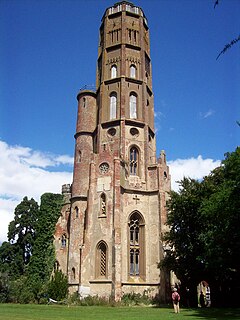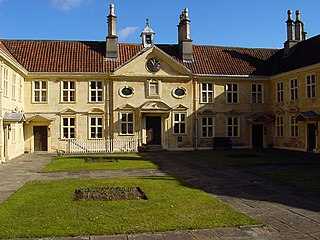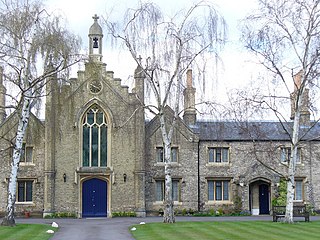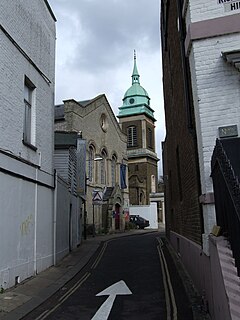
Blackheath is an area in Southeast London, straddling the border of the Royal Borough of Greenwich and the London Borough of Lewisham. It is located 1-mile (1.6 km) northeast of Lewisham, 1.5 miles (2.4 km) south of Greenwich and 6.4 miles (10.3 km) southeast of Charing Cross, the traditional centre of London.

Greenwich is a town in southeast London, located in the historic county of Kent and the ceremonial county of Greater London. It is situated 5.5 miles (8.9 km) east-southeast of Charing Cross.

Lewisham is an area of southeast London, England, 5.9 miles (9.5 km) south of Charing Cross. It is the principal area of the London Borough of Lewisham, and is also within the historic county of Kent. It is identified in the London Plan as one of 35 major centres in Greater London, with a large shopping centre and street market.

Lee, also known as Lee Green, is an area of South East London, England, straddling the border of the London Borough of Lewisham and the Royal Borough of Greenwich. It is located north west of Eltham and south east of Lewisham. It is within the historic county of Kent.

George Ledwell Taylor was an architect and landowner who lived in London.

The Museum of the Home, formerly the Geffrye Museum, is a free museum in the 18th-century Grade I-listed former almshouses on Kingsland Road in Shoreditch, London. The museum explores home and home life from 1600 to the present day with galleries which ask questions about 'home', present diverse lived experiences, and examine the psychological and emotional relationships people have with the idea of 'home' alongside a series of period room displays.

Sir John Morden, 1st Baronet was a successful English merchant and philanthropist who also served briefly as an MP. He established Morden College in Blackheath, south-east London as a home for retired merchants; as a charity, it continues to provide residential care over 300 years later.
Abraham Colfe was vicar of Lewisham from 1610 to 1657 and a notable English philanthropist, founding Colfe's School, a reading (primary) or Latin school and five almshouses for the inhabitants of Lewisham. The school later came to bear his name.

James Elmes was an English architect, civil engineer, and writer on the arts.

St Michael Paternoster Royal is a church in the City of London. The original building, which was first recorded in the 13th century, was destroyed in the Great Fire of London in 1666. The church was rebuilt under the aegis of Sir Christopher Wren. However St Michael's was severely damaged during the London Blitz in the Second World War. It was restored between 1966 and 1968.

Colstons Almshouses is a historic building on St Michaels Hill, Bristol, England. It was built in 1691 and has been designated by Historic England as a Grade I listed building. The front wall and gates are also Grade I listed. They are named after the Bristol-born merchant, philanthropist, slave trader, and Member of Parliament Edward Colston.

Gray's Almshouses is a terrace of almshouses in Taunton, Somerset, England, founded in 1635 by the wealthy cloth-merchant Robert Gray, whose monument survives in the Church of St Mary Magdalene. The building is one of the oldest surviving in Taunton and is one of the earliest brick buildings in the county. The Almshouses were designed to provide accommodation for six men and ten women and for a reader who was to act as chaplain and schoolmaster. It is a Grade I listed building as designated by English Heritage. Following renovation in the late twentieth century it now comprises sheltered accommodation of nine flats for the elderly.

Rainham Hall is a Grade II* listed Georgian house, owned by the National Trust, in Rainham, in the London Borough of Havering. Built in 1729 for Captain John Harle, the house was transferred to the National Trust in 1949; let to a number of private tenants, it remained closed to the public until late 2015. Of note is that Rainham Hall recently appeared as a location in the 2019 BBC production of A Christmas Carol.

The Elizabeth Almshouses are a collection of four almshouses on Elizabeth Road, Worthing built in 1860 by the architect William Burges. The almshouses were paid for by William's father, Alfred Burges, in memory of Alfred's wife. The building is listed Grade II.

Hickey's Almshouses are almshouses between Sheen Road and St Mary's Grove in Richmond, London.

Manor House Gardens is a 3.34-hectare public park and gardens situated in Lee, in south east London. The park features a walled flower garden, ornamental pond, fountain, ice-house, cafeteria, children's playground, community garden, dog-walking area and tennis courts/multi-purpose sports pitches. There is also a Park Ranger's Office and information point adjacent to the cafe, and the River Quaggy flows from east to west across the southern part of the park.
William Webster was a British builder who worked with architects and engineers such as Gilbert Scott and Joseph Bazalgette and is especially associated with several embankments of the River Thames.

Trinity Green Almshouses are a series of Grade I listed almshouses on Mile End Road in Whitechapel in London. They were originally built in 1695 to provide housing for retired sailors, and are the oldest almshouses in Central London. The buildings were damaged during the Second World War, and were restored in the 1950s by London County Council.

The Vineyard is a street in Richmond, in the London Borough of Richmond upon Thames. It includes three groups of almshouses, a Grade II listed church and Clarence House, a 17th-century Grade II listed house associated with Bernardo O’Higgins, who is commemorated on the wall of the property with a blue plaque, installed by English Heritage, for his role in the Chilean War of Independence.





















